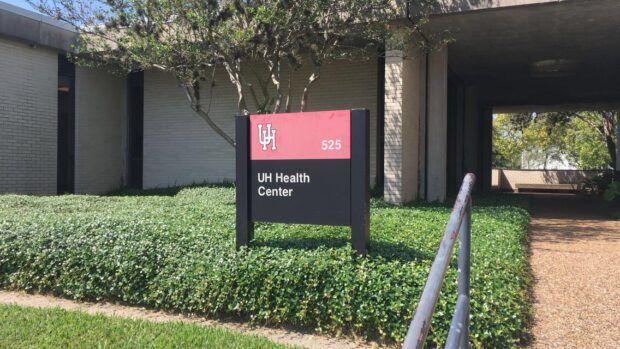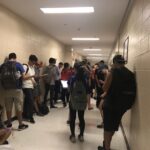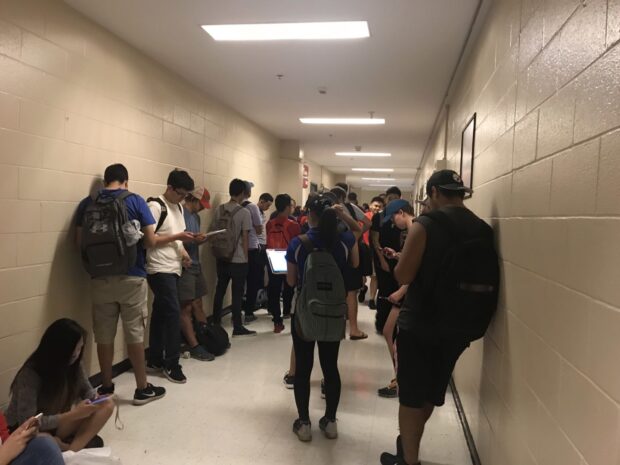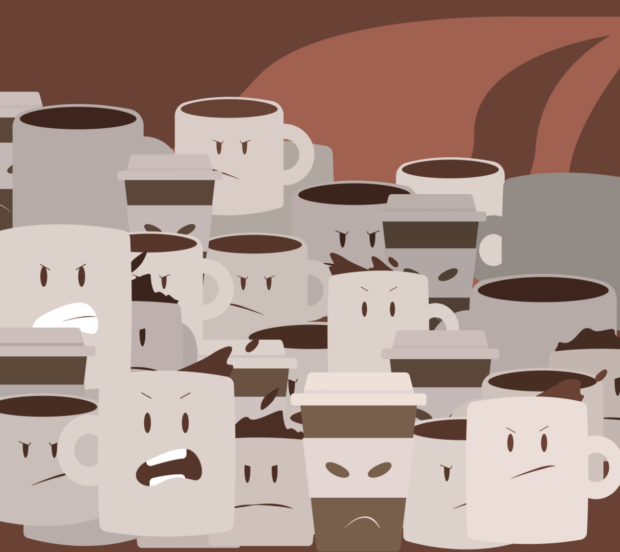

UH researchers Peila Chen, Ganesh Thakur, Sushanta Bose and Sriram Balasubramanian each play a role in UH’s multi-million dollar partnership with Oil India, which entered its second phase in September. | Michael Slaten/The Cougar
Greenhouse emissions will be reduced and oil production in India increased thanks to a technique called carbon flooding, which will be used in University of Houston’s partnership with Oil India that was initiated after the Indian state of Assam noticed a decline in oil production.
The partnership began last November, said petroleum engineering professor Ganesh Thakur. The partnership allows UH researchers a real-world field to work in and, in exchange, aids Oil India in increasing production, Thakur said.
“Our students are very good, and they get very good exposure to theoretical aspects and the laboratory aspects,” Thakur said. “What we are missing is a chance to apply these things in the field. This gives our students a tremendous way to learn how things work and learn not only from a theoretical point of view, but learn from a practical point of view.”
Oil India is a state-owned public enterprise that began looking at different universities to start a partnership with. Sriram Balasubramanian said they chose UH because of Thakur’s industry experience with carbon flooding and UH’s location in Houston.
Carbon flooding has been done in the U.S. for decades, Thakur said.
It works by injecting carbon dioxide underground to lower the viscosity of oil, which leads to an increase in oil production and, long-term, reduces greenhouse emissions, said postdoctoral research fellow Peila Chen, who is leading the efforts on enhanced oil recovery with Oil India.
It recovers oil in a faster, more economical way, Chen said.
“It is typically about 10 to 15 percent more oil you get out of the ground,” Thakur said. “If you have, say, 1 billion barrels of oil, 10 percent of that oil will be about 100 million barrels. One hundred million barrels, at $50 a barrel, is $5 billion dollars.”
The second phase of the partnership, phase two, began three weeks ago. The key goal of phase two is to use carbon flooding to increase oil recovery in Indian wells.
Leaders in UH’s side of the partnership will also train Oil India personnel and try a new technology called carbonated water injection to increase oil recovery in reservoirs, Thakur said. Peila will travel to the Oil India office to train its junior engineers and help them set up laboratories.
The project is funded by Oil India, but Thakur and his team also have a $3 million grant from Gov. Greg Abbott’s University Research Initiative program. The same amount is matched by the University.
“That gives me capabilities to provide different types of expertise, because of technology equipment and so on,” Thakur said. “And we are beginning to make contacts with several other companies here in Texas, in the U.S. and other countries. So our goal is to try to broaden this concept that we have applied in India, like a model, and do it at more places, do it even in Texas oil fields.”
In phase one of the project, researchers evaluated Indian oil fields for potential drilling sites. Phase two, expected to finish in fall 2018, is almost three times larger in scope than phase one, Thakur said.
Balasubramanian said that although these oil fields have been used for decades, data was not always collected in regular intervals.
“You know, things have moved so fast (that) everybody’s into high-performance computing, but your computing is only as good as your data,” Balasubramanian said. “This really helps even the students and the researchers to solidify their fundamentals, apply first principles and then bring in new technologies on top of that.”
Two memorandums of understanding have been signed by the University and Oil India. Thakur said he will begin planning phase three in six months.
Graduate, doctorial and post-doc students from chemical and petroleum engineering backgrounds, along with geology backgrounds, are part of the project. The partnership gives them a field to work in with real data instead of learning in a laboratory as they would use on campus, Thakur said.
There could be a continuous cycle of students doing research out in the field for years to come in Oil India and other locations, too, he said.
“One of the key themes for us is when we work with that industry — whatever we say we must deliver,” Thakur said. “Because once they can trust us, once they rely on us, then they will be asking for more and more help from us.”
news@thedailycougar.com
—
“Partnership with Indian oil company gives students field experience” was originally posted on The Daily Cougar





















